What is Apitherapy?
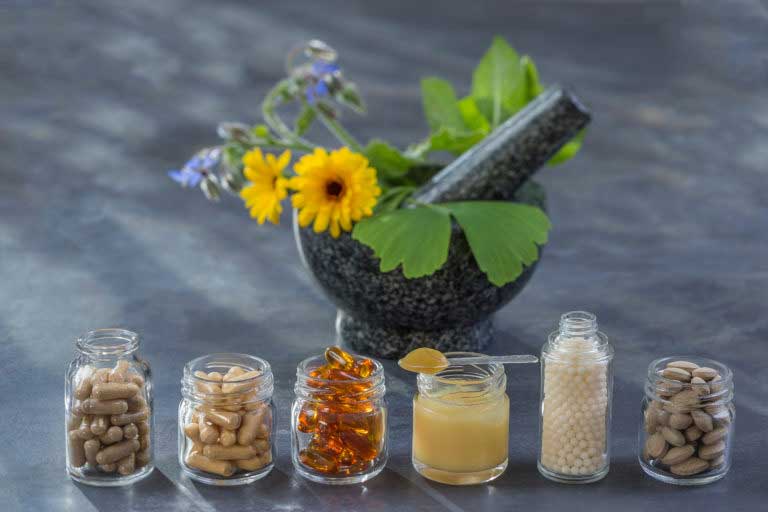 Apitherapy, or “bee therapy” (from apis which means bee in Latin) is the medicinal use of products made by bees. In the United States it is the products derived from the Italian honey bee, Apis mellifera, which are most commonly used. Products of the honey bee include bee venom, honey, pollen, royal jelly, propolis, and beeswax.
Apitherapy, or “bee therapy” (from apis which means bee in Latin) is the medicinal use of products made by bees. In the United States it is the products derived from the Italian honey bee, Apis mellifera, which are most commonly used. Products of the honey bee include bee venom, honey, pollen, royal jelly, propolis, and beeswax.
Therapies involving honey bee products have existed for thousands of years and the use of them may be old as human medicine itself. The ancient rock art of early hunter-gatherers depicts the honey bee as a source of honey and natural medicine. Bee venom therapy was practiced in ancient Egypt, Greece, and China — three Great Civilizations known for their highly developed medical systems. Hippocrates, the Greek physician known as the “Father of Medicine,” recognized the healing virtues of bee venom for treating arthritis and other joint problems. Recent scientific evidence suggests that various bee products promote healing by improving circulation, decreasing inflammation, and stimulating a healthy immune response.
Apitherapy, in general, and bee venom therapy in particular, became one of Dr. Kochan’s areas of clinical interest when he learned that it helps certain medical conditions which do not respond well to conventional medicine. This includes shingles, for which there is not a successful conventional allopathic medical treatment. He has personally experienced the pain relieving properties and anti-inflammatory benefits of bee venom for shingles and acute tendinopathies including tennis elbow and Achilles tendinitis. Bee products are an integral part of his approach to treating acute and chronic pain.
Dr. Andrew Kochan is a past President of the American Apitherapy Society. He has been on the forefront of evidence-based, clinical use and development of bee product therapies for nearly 30 years. For more information, visit the American Apitherapy Society at www.apitherapy.org
Cautions: Bee products are a valuable source of healing, but individuals with known allergies to bee products should use apitherapy with caution. People who have a history of heart disease, hypertension, tuberculosis, or diabetes should check with their physician before using honey bee products.
Products of the Hive:
 Bee Venom Therapy
Bee Venom Therapy
Bee venom has a long tradition as a folk remedy for arthritis and other degenerative diseases. Bee venom contains active compounds that have therapeutic properties. Bee venom is administered by properly trained physicians in the form of a direct bee sting or an injection of the sterile venom from a bottle. Bee venom therapy has been successful in several case series in treating the symptoms of several diseases which conventional pharmaceuticals can only partly help. Bee venom has potent analgesic and immuno-modulatory properties that help reduce inflammation and promote healing. It also contains several anti-inflammatory compounds including melittin and adolapin. Melittin is a peptide that appears to be more powerful than hydrocortisone in decreasing inflammation.
Preliminary case studies suggest that bee venom may improve symptoms of: Rheumatoid Arthritis, Gout, Osteoarthritis, Bursitis, Tendonitis, Post herpetic neuralgia, Painful or keloid scars, Multiple Sclerosis, Fibromyalgia.
How Is Bee Venom Therapy Administered?
BVT requires the expertise of a skillfully trained practitioner such as Dr. Kochan. Before starting treatment each patient is tested for an allergic response to bee venom. Bee venom injection treatments are given twice a week on average, and patients usually report some improvement within two to three treatments.
Honey
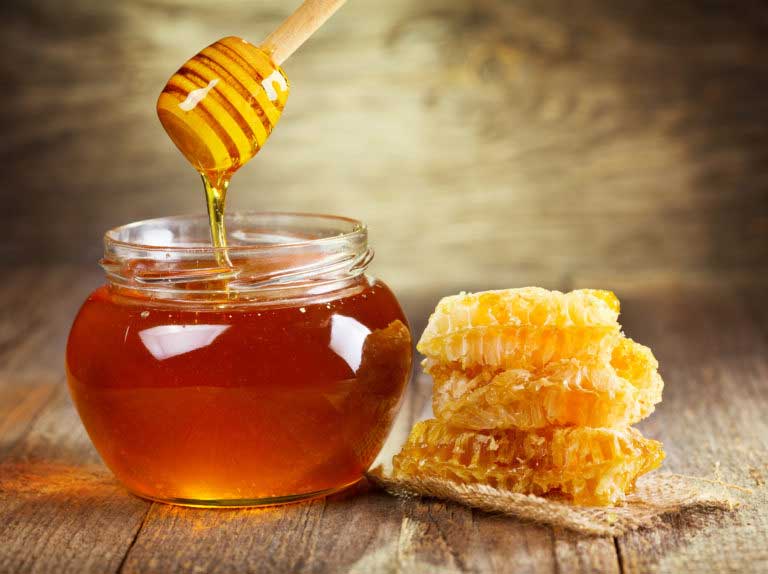 Raw honey, meaning honey that has not been heated or filtered except for visible particles, has been used by many cultures since ancient times for its medicinal value both when taken internally or used externally on the skin. Raw honey is a healthy food as well as a substitute for regular sugar and artificial sweeteners. It doesn’t stimulate insulin production as strongly as sugar and contains small amounts of protein, vitamins, minerals, and enzymes.
Raw honey, meaning honey that has not been heated or filtered except for visible particles, has been used by many cultures since ancient times for its medicinal value both when taken internally or used externally on the skin. Raw honey is a healthy food as well as a substitute for regular sugar and artificial sweeteners. It doesn’t stimulate insulin production as strongly as sugar and contains small amounts of protein, vitamins, minerals, and enzymes.
The favorable effects of raw honey as a natural medicine for sore throats, cough, flu, stomach ulcers, digestive disorders, insomnia, and obesity are well known in folk medicine and are beginning to be documented in the modern scientific literature.
Modern research has confirmed its antifungal and antimicrobial properties. New Zealand’s manuka honey was found to inhibit the growth of H. pylori, the bacteria that is sometimes responsible for the development of gastric ulcers and dyspepsia.
External indications for honey include conjunctivitis, athlete’s foot, eczema, lip sores, wounds resulting from surgery, burns, bed sores, and infected ulcers. In many countries physicians recommend using honey as a first line of defense for burns, superficial wounds, and even deep lesions such as abscesses. It is Dr. Kochan’s experience the wounds treated with raw honey generally heal faster and with less scarring than would be normally expected. Raw honey is a natural and painless antiseptic. It kills germs and contains an enzyme called glucose oxidase which is converted to hydrogen peroxide. A 1991 clinical study compared treating burns either with honey or with silver sulfadiazine, a common treatment for burns. Only 9% of patients treated with honey developed infections, compared to 93% of those treated with the silver sulfadiazine.
Processed honey commonly available in grocery stores has been heated and filtered so it looks better and doesn’t have as great a tendency to crystallize. Crystallization does not damage honey and can be reversed easily by gently heating the honey in a water bath if necessary. Processing can destroy the enzymes and other medicinal components of honey such that the medicinal value of the honey will be lost. If possible, use and eat only raw honey, which should be labeled as such if bought in a store or buy it from a bee keeper at a local Farmer’s Market.
 Propolis
Propolis
Propolis has been used medicinally for its antiseptic, antimicrobial, and detoxifying properties for centuries. Many cultures have relied on it to heal a wide variety of wounds. Propolis is a sticky substance that bees make from tree resins. Bees keep their hive sterile by coating the inside of the hive with it, preventing the spread of bacteria and fungi that would be detrimental to the wellbeing of the colony. Propolis from different enviorments exhibit slightly different properties depending on the types of tree and plant resins available in the area. All propolis includes multiple bioflavinoids.
In many countries where antibiotics are not widely available, it is a common practice to wash, gargle, or irrigate with propolis. Used as an antiseptic, propolis is able to prevent the growth of bacteria and also promote the healing process. Propolis is also commonly taken as a remedy for sore throats. It is used topically in salves for cuts, burns and lesions of the skin that have not healed. Used as a mouthwash, propolis is able to prevent bad breath, gingivitis, tooth decay and gum disease. It contains bioflavonoid compounds known for their antioxidant activity as well as tissue strengthening and regenerative effects. A 1994 study performed in Poland demonstrated the strong anti-aging effects of propolis when mice given propolis were found to live longer than a control group.
Propolis is capable of acting as an anti-inflammatory as well. It helps with arthritis, boils, acne, asthma, dermatitis, ulcers, and inflammatory bowel diseases. Propolis has also been found to have antimutagenic effects too, which can aid in the prevention of cancer, and can also ameliorate the side effects of chemo and radiation therapies especially when given with royal jelly.
Pollen
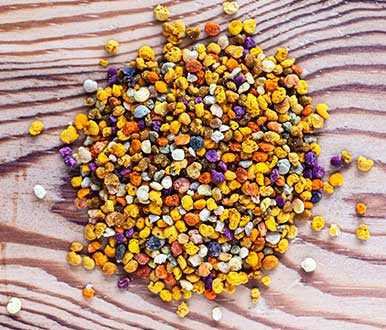 Bee pollen is the male seed of a plant that bees collect to eat in the hive and also to process for feeding the queen bee. Pollen is about 25% proteins. It is the primary source of dietary protein for bees. It has become a common energy-enhancing nutritional supplement. It contains all the essential amino acids, minerals, and vitamins, except vitamin B-12, needed by humans. However, it does not contain the correct proportion of nutrients needed to sustain humans for an extended period of time. Because of its nutrient density, one to two teaspoons of pollen is equivalent to a serving of vegetables. Therefore, supplementing pollen into your diet is a great way to significantly improve your nutrient intake.
Bee pollen is the male seed of a plant that bees collect to eat in the hive and also to process for feeding the queen bee. Pollen is about 25% proteins. It is the primary source of dietary protein for bees. It has become a common energy-enhancing nutritional supplement. It contains all the essential amino acids, minerals, and vitamins, except vitamin B-12, needed by humans. However, it does not contain the correct proportion of nutrients needed to sustain humans for an extended period of time. Because of its nutrient density, one to two teaspoons of pollen is equivalent to a serving of vegetables. Therefore, supplementing pollen into your diet is a great way to significantly improve your nutrient intake.
There is scientific evidence that pollen has a variety of anti-inflammatory, anti-cancer, and anti-arthritis properties. It has been reported to be useful in many medical conditions including: varicose veins, high cholesterol and triglycerides, fatigue, infertility, impotence, anorexia, obesity, constipation, diarrhea, hypertension, prostatitis, depression, scar formation, and recovery from illness and surgery. Studies have shown that pollen supplementation can prevent altitude sickness. Pollen also has the highest ORAC index (a measure of antioxidant activity) of any fruit or vegetable, so it can help in anti-aging therapies.
Due to its antiallergic, anti-inflammatory and immune system normalizing phytochemicals, bee pollen is used therapeutically to desensitize people who have hay fever and pollen sensitivities. This is done through oral desensitization and is analogous to the way allergists treat people with desensitization injections. The therapy consists of giving a patient tiny amounts of a substance that a person is allergic to, and slowly increasing the amount over time. Pollen is compatible with other therapies, it can be used long term, has no toxicity even at high doses for those who are not sensitive or allergic, and can even be supplemented during pregnancy.
 Royal Jelly
Royal Jelly
Royal jelly is a substance that worker bees produce in their salivary glands. All bee larvae are fed royal jelly for the first three days of life. After that only the larva designated to be the queen is fed royal jelly. The components of royal jelly help her mature into a fertile and longer-living bee. Whereas worker bees live from 4-6 weeks, the queen lives up to 6 years and lays 2.5 times her weight in eggs a day.
Royal jelly is a prized commodity in many cultures. It has played a key role in traditional Chinese medicine, and is still used today to prevent and ameliorate a wide variety of medical conditions. These include, but are not limited to: anxiety, arteriosclerosis, arthritis, bone fractures, asthma, depression, fatigue, lack of sexual desire, hair loss, impotence, insomnia, liver and kidney disease, stomach ulcers, menopausal symptoms, varicose veins, a weak immune system, high and low blood pressure, and a variety of skin conditions.
Royal jelly, which is high in B vitamins, has a metabolic stimulating action, aiding in the breakdown of proteins, carbohydrates, and lipids. Additionally, it helps promote collagen production. It can also increase oxygen consumption and decrease levels of free radicals that cause aging. Royal jelly has a direct effect on the adrenal glands leading to an increased secretion of adrenaline that can be cardioprotective.
The effects of royal jelly on specific conditions may be amplified when taken in combination with other bee products. Another more recently found function of royal jelly is providing protection against the negative side effects of chemo and radiation therapies, especially when given with propolis. This combination can also be used with positive effects for viral infections including shingles.
While there is still much to be learned about royal jelly, some very relevant studies have shown how effective it can be. A Japanese study found that royal jelly produced an antifatigue effect in exercising mice. In China and Russia, royal jelly was effective in treating chronic viral and bacterial infections, anorexia, varicose veins, and stomach ulcers. During a flu epidemic in Yugoslavia, it was noted that those who consumed royal jelly daily were less likely to get the flu. Another study done in Egypt in 1995 revealed that royal jelly was capable of killing several bacterial cultures, including E. coli. In 1995, it was found that people taking 50-100 milligrams of royal jelly per day decreased total serum cholesterol by 14% and lipids by 10%. Dr. Kochan takes royal jelly daily, which he believes promotes collagen synthesis, to aid in healing from prolotherapy treatments or other injuries, as well as to help prevent and treat viral infections.
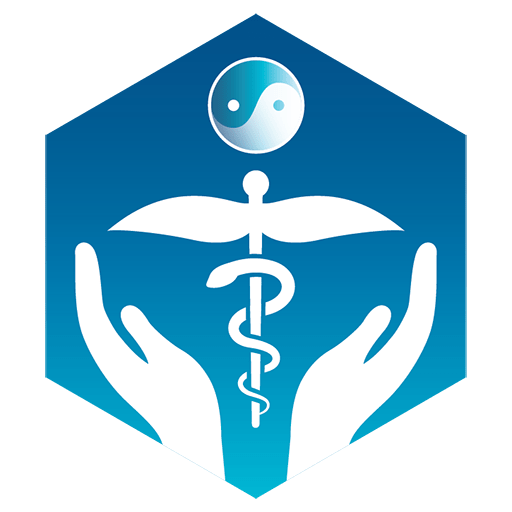
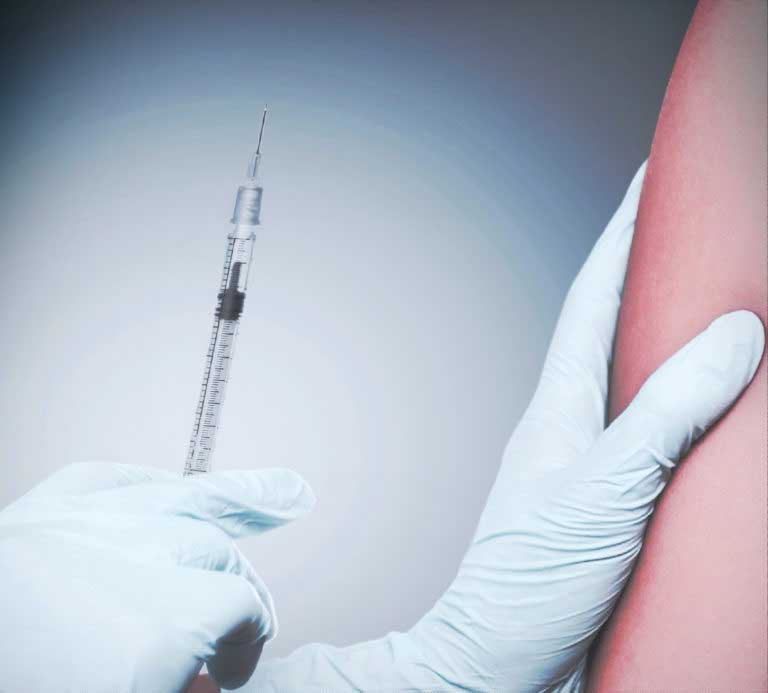 Bee Venom Therapy
Bee Venom Therapy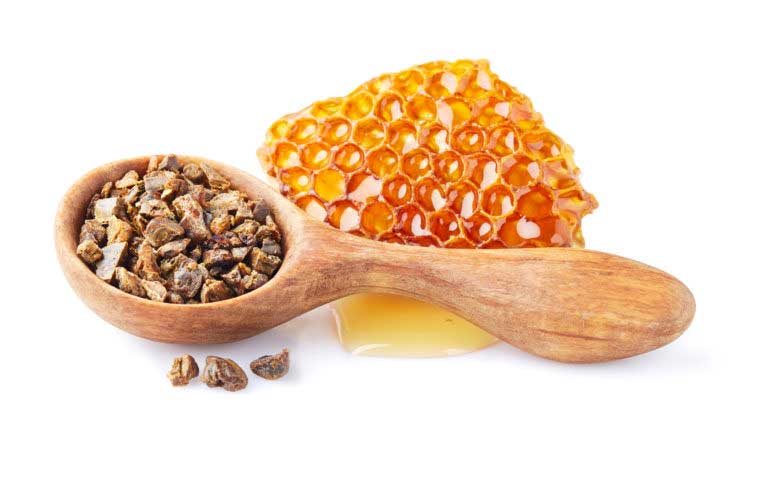 Propolis
Propolis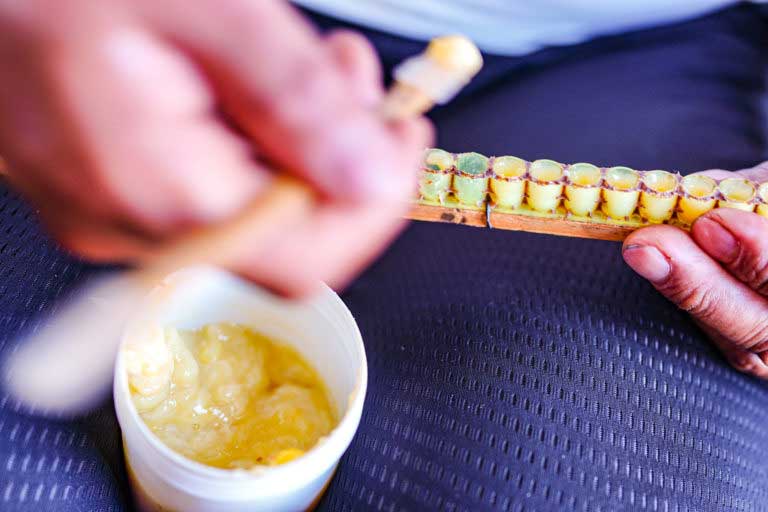 Royal Jelly
Royal Jelly